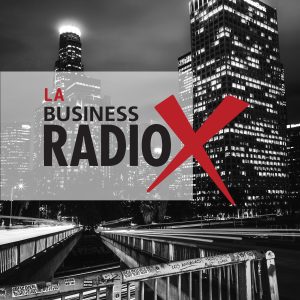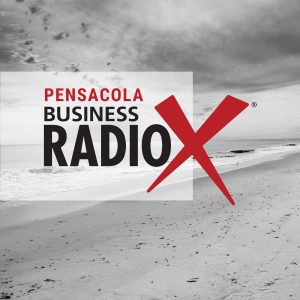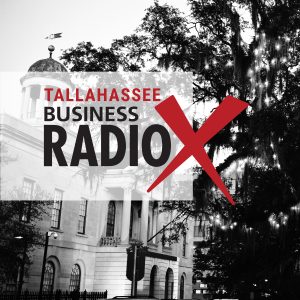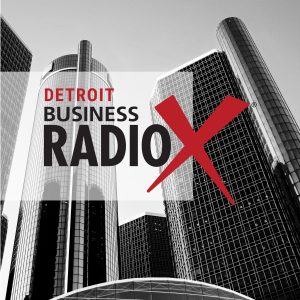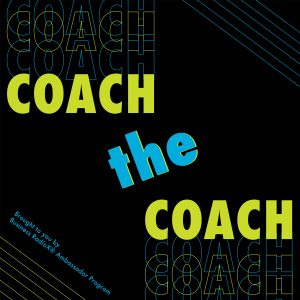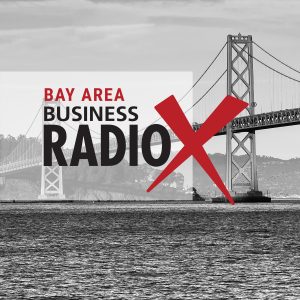 Eric Pfeiffer is the founder and CEO of MPWR Coaching. He has been in the leadership development space for over 15 years, having helped build a multi-million dollar coaching business and trained over 150 coaches worldwide.
Eric Pfeiffer is the founder and CEO of MPWR Coaching. He has been in the leadership development space for over 15 years, having helped build a multi-million dollar coaching business and trained over 150 coaches worldwide.
He founded MPWR Coaching in 2019 to expand his efforts to unlock leaders’ potential so they can grow their organizations and teams in new, never-imagined ways.
He is known for creating one of the only Leadership Operating Systems available today, which empowers the true engine of any business – its people. He has published two life-transforming books: Leadership Gravitas and Transform Your Trajectory, each introducing simple tools that give leaders a competitive advantage in any context.
He speaks and leads out of the overflow of his own journey. He is a fierce practitioner of what he teaches and is committed to becoming a better version of himself daily.
Connect with Eric on LinkedIn.
What You’ll Learn In This Episode
- Leadership
- Development
- Emotional intelligence
- Leadership operating system
- Culture transformation
- Unlocking leadership potential
![]() This transcript is machine transcribed by Sonix.
This transcript is machine transcribed by Sonix.
TRANSCRIPT
Intro: Broadcasting live from the Business RadioX studios in Atlanta, Georgia. It’s time for High Velocity Radio.
Lee Kantor: Lee Kantor here, another episode of High Velocity Radio and this is going to be a good one. Today on the show we have Eric Pfeifer with Empower Coaching. Welcome. Thank you Lee. Great to be here. I am so excited to learn what you’re up to. Tell us about Empower Coaching. How you serving folks?
Speaker3: Uh, yeah. Well, I started in power coaching about seven years ago. Now it’s slightly before the pandemic with a desire to help leaders become the best leaders of themselves. Uh, which then translates into becoming better leaders of other people. And, uh, then the pandemic hit, and I thought the business was done, but instead, um, it went in the opposite direction. Uh, our business grew very rapidly as, um, people in corporate America came under a lot of pressure. And, um, you know, we have a little saying that when things are going well, we’re usually okay. But you put us under enough pressure and we start to crack. And I think there were a lot of companies that were starting to feel the wear and tear of internal relationships and the struggles that came out of that season. And so we’ve we’ve been working hard ever since to help people identify the key challenges they’re facing within their businesses, especially from a personnel standpoint, and to help them, um, develop long term sustainable remedies for those.
Lee Kantor: Now, what’s your back story? Have you always been involved in coaching?
Speaker3: Uh, yeah, in some degree, yes. I’ve always been involved in the leadership space. Um, and like so many people, you know, in my younger years, I couldn’t have led myself out of a box, per se. But then, you know, began a long journey of trying to figure out what it meant for me to become a better leader and consumed lots and lots of content over the years. And but most importantly, thankfully, had a few very significant mentors who helped me discover what it meant for me. Really, uh, to to become a better leader of myself. And I think that’s where all great leadership starts. And and so I’ve been on that journey personally and have just basically translated all of, of what I’ve been learning from smarter, wiser people into simple, practical tools that, um, that everybody can benefit from.
Lee Kantor: So what was going on for you to hit a point where you’re like, uh, I don’t think I have all the answers. I better start asking some folks.
Speaker3: Yeah, well, to be honest, Lee, I hit multiple points. That’s probably what kept me on this track is, uh, you know, in the early days, you. I think we all kind of glamorize leadership. We think, you know, what comes with a role and a title and a potentially a better paycheck is, you know, that we’ll have the answers all of a sudden. We’ll know what to do when problems arise. But it was the exact opposite for me. I found myself constantly feeling like I was underwater. I found myself in stressful situations, uh, operating in ways that were unhelpful actually, to the people that I was trying to lead. That was a big wake up call. Um, I was seeing some of those same trends in my the early years of my marriage and my parenting. Um, and, uh, and I think for me, um, you know, I really there was a particular mentor who basically said, hey, listen, um, you’re coming to me bitching and complaining about, you know, how the world’s not playing fair and things aren’t working out for you. Um, but until you wake up and realize that it’s the person in the mirror that’s the problem, um, you’re going to have a very frustrating life. And that that began my journey into what we call, you know, the power of personal responsibility, that we can’t control the world around us. But we we have a lot more control and power over our own attitudes and behaviors than we realize. And we are the people who really do end up shaping the life that we experience. And so we’re either going to choose to give away that power to the people and circumstances around us, or we’re going to take that power and learn how to leverage it wisely, um, for ourselves and for other people’s sake.
Lee Kantor: So when a person is going through a struggle and then they have that aha moment that, hey, maybe it isn’t you, it’s me kind of situation, what are um, like, what’s the next move? Like, say you get to that point, you have that aha moment of oh personal accountability. Yeah I usually don’t like that. But I’ll give it a try. And then you say, okay, I’m going to be uh, more personally accountability. I’m going to control what I can control. I am going to work on the processes and focus less on the I mean, focus more on those and less on the outcomes I desire. Yeah. What are kind of the baby steps that then get you moving instead of just talking about it? But to actually doing it because the doing is the hard part.
Speaker3: It absolutely. Um, I would say this for, for any listener out there. First of all, most of us didn’t learn these basic skills growing up. Some of us were fortunate enough to great, but most most of us didn’t. I certainly did not. And so it wasn’t until my late 20s, early 30s, um, where I began to wake up to this reality. And fortunately, in that time I was apprenticing in under a mentor who began to coach me and teach me the basic core skills of what we call self-awareness. Right? So practicing honesty, um, humility, self-love, all of which sound pretty easy, um, but are incredibly difficult because, um, you know, like I often say, we’re our own worst enemy because we have blind spots, because we don’t really want to take a hard look inside, because shame and guilt and self condemnation are always lurking around every corner, what people nowadays call the imposter syndrome. And so I tell people that the first order of business, um, when we wake up to the the necessity for personal responsibility, the first thing is to give ourselves permission that like every other human being in all of history, we come with all kinds of dysfunctions, inadequacies and foibles, some of which have been inherited from our family of origin, some of which we’ve picked up along the years out of self-protecting coping mechanisms.
Speaker3: And so just giving ourselves permission like we’re human. And so for us to embark on this journey of personal responsibility, we need to give ourselves permission. To be on that journey to, um, to wrestle and what I call stumble, fumble, bumble our way through the practices of honesty, humility, and self love and and to know that it takes time. But I you know, people like Brene Brown, I’m so grateful for people like her who have, um, have declared that this is perhaps one of the bravest of all journeys that we can make as people. Um, but it’s also the journey that I think leads us to a much clearer perspective on ourselves, which gives us a chance to change something we can’t change, what we can’t see. And so the first order of business, after we give ourselves permission, you know, to to be on a journey is, um, is to begin the process of learning the simple skills of seeing ourselves more soberly, more clearly, so that we have a fighting chance to make the necessary changes.
Lee Kantor: Now, is that where, um, some of the really important value of a coach comes in is to be that kind of honest broker? Uh, to tell the truth to the person, um, and hold them accountable to some degree about what they’re saying and then what they’re doing.
Speaker3: Absolutely. Lee, I think I think the role of a coach, a great coach, is to empower their clients with the skills, the tools and skills. So that they can do that for themselves. But at first, because that is such a difficult and oftentimes uncomfortable, painful, disorientating experience that the help the partnership of a good coach to practice those skills in a safe environment where there’s no judgment, um, and there’s lots of grace, empathy and compassion, I think is essential. Um, but ideally, the clients that we work with, um, we want them to learn how to solicit the appropriate feedback. Um, through a variety of mechanisms from their environment so that they can self diagnose and self assess and then make the necessary changes in their own attitudes and behaviors. But yeah, a coach is usually a great start for people who are either unfamiliar, lacking confidence, or feel like, man, I really would love some partnership as I learn how to how to how to engage this process.
Lee Kantor: Now, how does a person who is struggling decide if is coaching right for me? Is therapy right for me? You mentioned his mentor having a mentor. Is that right for me? How do I know who is the right Sherpa for me at this point in my journey?
Speaker3: Yeah. You know, I’m a big believer in all of the above, Lee. I think, um, at different times, most of us, especially if we’re in our adult years of life, we can point, we can look back and point at particular persons in our life who have served different purposes, whether mentors or coaches and guides, um, uh, you know, consultants, whatever. Um, or therapists. What I, what I tell people is I think we need therapists, um, when, when we come up against things from our past that are holding us back and we need to get free from those, I think therapists can be very helpful, um, in dysfunctions that are rooted in our family of origin, um, in, in traumatic past experiences. So when I think of of therapists, I tell people that’s like looking in the rear view mirror and as you’re driving through life, um, I think we need coaches who can equip and empower us with practical tools so that we can move forward today, um, where oftentimes therapists, there’s most of that time is spent thinking about the past. Coaches are, are, are are meant to help us develop the new skills, um, so that we can operate more effectively moving forward. I think the role of mentors is we need people that are further down the road than us. Um, these may not be therapists or coaches, but these are people, um, who we can be inspired by, that we can process tough situations with and by virtue of their their experience and their wisdom. Um, they’re not necessarily there to give us the answers, um, but to speak from the overflow of their journey in whatever area of life we’re looking to, to receive mentorship, and we can draw from their wisdom and begin to develop our own solutions.
Lee Kantor: Now as your client, typically somebody in business that’s going through some business like struggle or is it just could it be a person that’s, you know, retired at home and has their own personal demons they’re wrestling with?
Speaker3: Yeah. You know, we I have a variety of coaches that are a part of our organization. And and so we work with a very diverse, um, uh, spread of different kinds of people. I personally work with, um, high level executives for the most part, or high level performers and maybe professional athletes, um, CEOs, presidents, ownership groups, um, boards. Um, it’s and it’s all the same toolkit that we’re all using but applied um, in, in contextualized a little bit differently for, um, the particular client that we’re working with.
Lee Kantor: And and your business has evolved to not only are you coaching people, but you’re also certifying people who are considering becoming a coach.
Speaker3: That’s right. So I spent I’ve spent, you know, the better part of 20 years, um, borrowing from people much smarter than myself, other coaches and mentors, um, other other thought leaders and, and working to develop what I call a leadership operating system. And what I tell people is it’s it’s comprised of a set of core visual tools that provide people because we’re all leaders, right? Leaders are anybody who has influence. And so we’re all leaders in our own way, shape or form, even if we don’t have a role or a title in an organization. And so what these tools do is they provide for us a mental framework so that we can, first of all, have real clarity around what does it mean for me to be the best version of me, regardless of who I am, my context of life, my, you know, my economic, social, uh, situation? How do I, as a human being, have a clear picture of what it means for me to be the best version of me? Um, and then secondly, these tools provide a diagnostic effect and that we can assess our attitudes, our behaviors, our impact on the environment around us through these tools, um, so that we can determine what’s working, what’s not working, um, which is incredibly important. Um, and I think, you know, in the midst of all that, um, I think that what we call our leadership operating system, which I, you know, I could be wrong.
Speaker3: I think it’s one of the only or one of the only organizations, you know, um, promoting a, a leadership operating system. Um, it’s so incredibly important because so much of what’s available out there in the world of coaching and consulting, which all of its great, um, a lot of it reflects more of what I would call an app. Like, you know, we pick up our smartphones and we open them and we love them because we can download a million different apps to help us solve a particular problem in our life. Uh, but the genius behind these smartphone devices is the operating systems that were developed, which I think think of the operating system as a governing or parental, um, set of software that dictates, determines, guides, protects, sets, boundaries and expectations for what the apps can and can’t do. Um, how much energy is given to an app, um, managing those apps. And I think for most human beings, what we fail to realize is that from when we were in our youngest years, we’ve been developing our own human operating system. We inherited something from our family of origin, from from our upbringing, from schooling, from coaches, from different contexts, different jobs, bosses. And I think what most people get frustrated with in their leadership journey is they read the books, they listen to the podcast, they watch the YouTube videos, they go to a conference, they get all these amazing ideas.
Speaker3: Then they start trying to integrate and put those ideas into practice. And and they don’t find the kind of success they want. So they get frustrated and they blame those various products. And I tell people the problem usually isn’t the product, because those are apps, and they usually work well because somebody spent a lot of time developing those particular apps, those leadership apps. The problem is probably more fundamentally in your personal operating system that you are unable to effectively, um, leverage those leadership apps that you’ve you’ve acquired. And so once a leader recognizes that, they first of all, do have their own operating system, in other words, the kind of the internal system of attitudes and behaviors, default patterns of, uh, reacting, responding to life. Um, once they recognize I actually do have an operating system and some of it is helpful and some of it isn’t. And so all we’re doing is helping people, leaders, uh, anybody who wants to increase the benefit of their influence to to recognize, hey, if I can, you know, download this leadership operating system, then it’s going to greatly enhance my ability to actually engage in all of the different spheres of my life. Um, with a far greater chance of bringing the best version of me to that space.
Lee Kantor: So what? Um, who is a good candidate for Empower Coaching certification? Like what is what are they doing right now?
Speaker3: Yeah. I mean, our ideal clients are business leaders, business owners, maybe business owner operators, um, high, you know, higher level executives, although we work with, you know, we have a lot of coaches that work with anybody. Um, but our ideal client, we want to work with people of influence because we know that if we can help that leader and then get access to their team, then to their organization, the the scope of impact that we can have is much greater. And yet we’ve developed content and products to put this operating system into the hands of as many human beings as possible. Honestly, this this is the stuff I wish I had learned when I was 14, 15, 16 years of age. I wish I had learned this in college and grad school. I wish I had learned this in my early years in the workforce. I this what we’re trying to do is change the world by changing the leadership of the world, by empowering those leaders of at any level with an operating system that will allow them to move beyond the the dysfunctions that are robbing them of greater experiences of success.
Lee Kantor: So are they currently a coach of some kind or are they, you know, a retired executive or are they, you know, a somebody who just graduated college? Like who who is this person?
Speaker3: Yeah. So most of the clients that come to us right now, um, for, you know, for actual coaching, um, these are people, first of all, who can afford it. Right? And so, um, these are usually leaders of larger organizations. And when I say larger, I mean, you know, these are businesses that are usually 50 to $100 million a year in revenue or larger. These are professional athletes. These are people of influence. So they’ve they’ve reached a particular level in their, their industry, um, but are beginning to experience the wear and tear of I may know how to build a. This. I may know how to market and sell whatever said product or services, but as any business grows, more people get involved in the business. And what I tell these leaders is the people are the engine of your business, not the product or the service, and therefore to the degree that those individuals and collectively they are operating effectively, the business is going to succeed and flourish to the degree that that engine is not operating well. That’s why you’re finding aspects of your business broken down on the side of the road. And therefore, for most leaders, they eventually fatigue because they have never been trained in how to assess and change culture in their organization. They’ve never been trained in how to develop other leaders. They’ve never been trained well in how to engage in in what we would refer to as, you know, the very common experience in the workplace of conflict and disagreement and, you know, difference of expectations and what happens when somebody is not performing up to snuff. And what do we do with the difference of personalities and perspectives that are that are going to be involved in any context where there’s a team? And so it’s it’s really all about helping leaders who have hit a threshold where they say, I know how to build a business. I don’t know how to build the people of my business. We want help.
Lee Kantor: Now, how have you seen kind of just the career of coaching evolve over the decades that you’ve been in it? Um, at one point it was only, you know, for the highest performers, and now it seems to be trickling down to all aspects of organizations.
Speaker3: And for that I am so incredibly grateful because like I said before, leadership is synonymous with influence. And I think the more that we recognize that we as human beings are leaders in our own particular domain of influence, the more seriously we will take the importance that all people should be engaged in some kind of leadership development. I mean, you know, we are we are in the influencer era, right on all over social media. And I just it absolutely scares the snot out of me to think of all these incredible people who are having lots of influence on a lot of different platforms. Right before, it was just the politicians, the high level business leaders, the professional athletes, the, you know, the celebrities. But now, you know, we’ve got young people who have are able to develop a significant scope of influence, who themselves behind the scenes are breaking down, burning out and and operating, um, you know, out of a lot of insecurity, heartache, uh, stress, anxiety and not not because they’re not great people in and of themselves, but because they’ve never been trained in how to operate well under pressure. They’ve not been given the simple skill set, um, that would enable them to persevere, endure through difficult challenges. Um, and so, you know, I’m a big believer that the more that we can popularize not just the importance of, but access to, um, basic leadership training, um, I think we’re going to see, uh, a significant uptick in the health of our kind of prevailing culture across every sector.
Lee Kantor: So if somebody wants to learn more, have a more substantive conversation with you or somebody on your team, what is the website? What are the best coordinates to connect?
Speaker3: Yeah, so it’s empower coaching, but it’s spelled m p w r. So empower without the vowels empower coaching. Com and um we offer a free one hour coaching call for anybody and everybody. Uh, it’s we are democratic and we want everyone to have access. And we’d love to have a chat. Not because we’re the solution for everybody, but because we want to help people get connected with the resources that will help them. Increased their leadership capacity.
Lee Kantor: Well, Eric, thank you so much for sharing your story today. You’re doing such important work and we appreciate you.
Speaker3: Thank you. Lee.
Lee Kantor: All right, this is Lee Kantor. We’ll see you all next time on High Velocity Radio.


 Jason Leverant is the President and COO of the
Jason Leverant is the President and COO of the  AtWork Peachtree Corners is locally owned by Kamal Bhatia, an immigrant from India with decades of experience in hospitality and Senior Vice President of Operations of Atlanta-based Action Bartending School.
AtWork Peachtree Corners is locally owned by Kamal Bhatia, an immigrant from India with decades of experience in hospitality and Senior Vice President of Operations of Atlanta-based Action Bartending School.

 For Clara Lucia Jaramillo-Carrier, life is more about the journey than the destination. Her journey began in Colombia, where she fought for life after being born prematurely.
For Clara Lucia Jaramillo-Carrier, life is more about the journey than the destination. Her journey began in Colombia, where she fought for life after being born prematurely.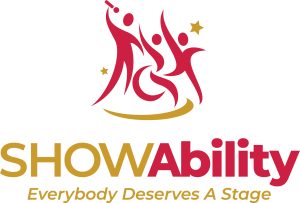
 A cultural ambassador for the U.S. State Department singing at U.S. embassies around the world, also known as America’s Songbird, Myrna Clayton is an international jazz singer who has been performing for over 14 years. She has performed throughout Russia, Belarus, Germany, Nigeria, Great Britain, Ghana, The Baltics, France, and across the United States.
A cultural ambassador for the U.S. State Department singing at U.S. embassies around the world, also known as America’s Songbird, Myrna Clayton is an international jazz singer who has been performing for over 14 years. She has performed throughout Russia, Belarus, Germany, Nigeria, Great Britain, Ghana, The Baltics, France, and across the United States.
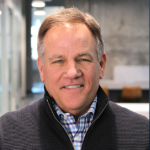 Scott Matthews is the CEO of
Scott Matthews is the CEO of 
 Cheri Benjamin stands as a trailblazer in the realm of real estate, with a journey marked by remarkable achievements and unwavering dedication. Her entrance into the world of Real Estate commenced in 2000 as a Loan Officer, where she not only excelled but also expanded the business to include a team of 22 Loan Officers. Throughout her tenure, she shattered sales records that endure as testaments to her prowess over the past two decades.
Cheri Benjamin stands as a trailblazer in the realm of real estate, with a journey marked by remarkable achievements and unwavering dedication. Her entrance into the world of Real Estate commenced in 2000 as a Loan Officer, where she not only excelled but also expanded the business to include a team of 22 Loan Officers. Throughout her tenure, she shattered sales records that endure as testaments to her prowess over the past two decades.
 Steven Pope is the founder of
Steven Pope is the founder of  Lauren Fernandez is the CEO and Founder of
Lauren Fernandez is the CEO and Founder of  Frank Lazaro is a leader and innovator within the
Frank Lazaro is a leader and innovator within the 